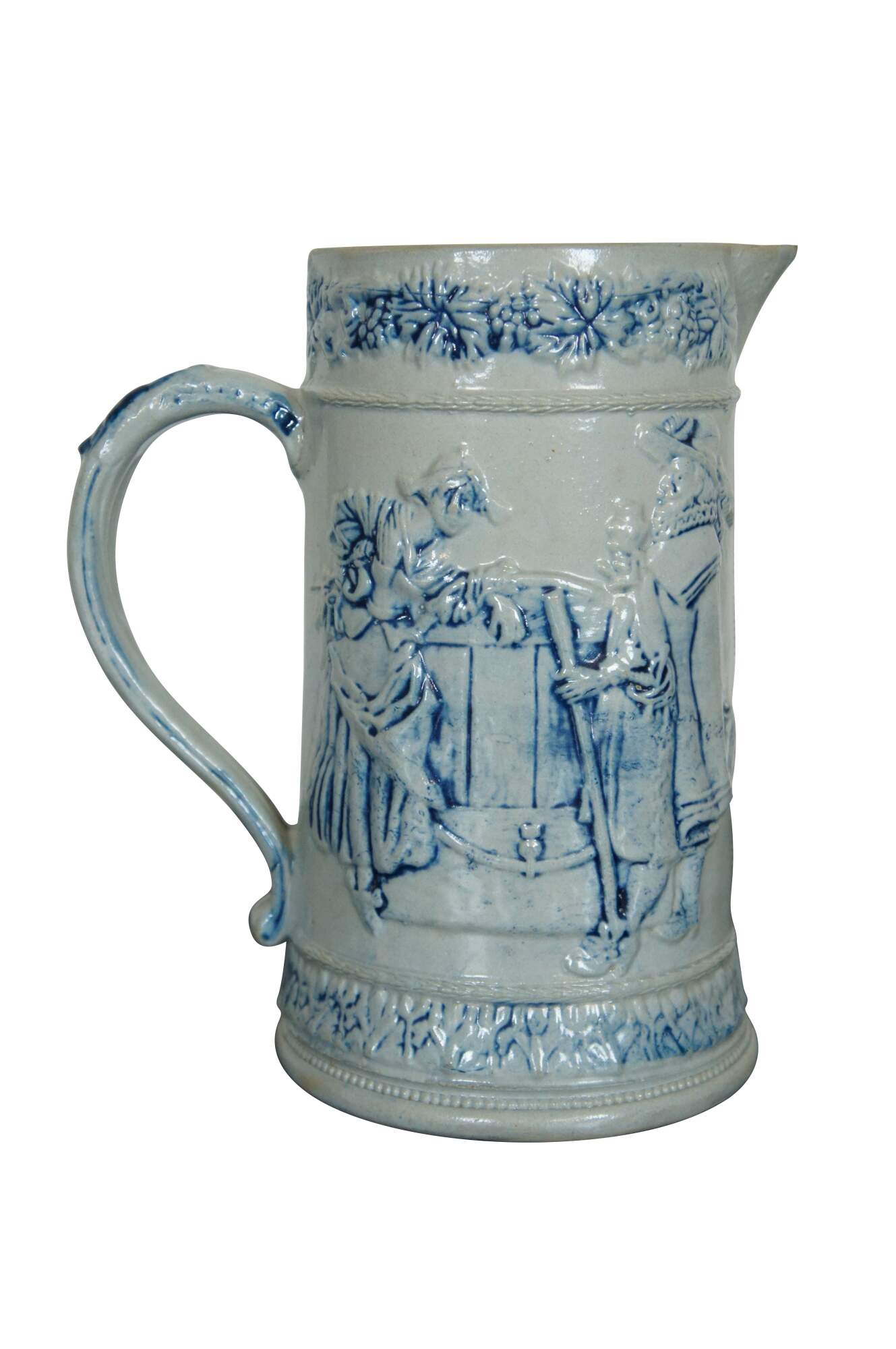
Shipping:
Free Shipping Included
Delivery:
Estimated 2-15 Business Days
Payments:
Credit Card, Check, Cash, PayPal, Apple Pay, Venmo
Returns:
30 Days 100% Money Back Guarantee, Buyer Pays Return Shipping
Description
Antique Whites of Utica salt glaze tavern pitcher or jug featuring a scene of three men watching a boy chug a beer, and two men standing next to a beer barrel. Marked 5 on base.
Whenever we notice a blue stoneware beer mug or stein, we automatically assume that it was produced in Germany. In most cases we would be correct, with one noticeable exception: those made by Whites of Utica. Whites was started in 1839 by Noah White who was a barge pilot on the Erie Canal which ran from Albany to Buffalo, New York. Because of its prime geographical location, Utica was obviously an ideal spot for a pottery factory. The waterway could be used to transport clay northward from the clay-rich areas of New Jersey and to return the finished products to the marketable areas such as New York City, Boston and Philadelphia. Noah White eventually settled in Utica where he bought a pottery business owned by Samuel Addington and renamed it Whites of Utica. In 1849 Noah and his two sons, Nicholas and William, formed a partnership. The mark used on their wares at that time was simply Whites Utica or White’s Utica. In 1863 Noah’s grandson, William N. White, joined the firm and the name was changed to Noah White, Son & Co. William took over the firm’s management upon Noah’s death in 1865.
Fig. 2 — Impressed base mark: WHITES POTTERY UTICA NY.
In the 1870s a new building was added, expanding the operation, which both modernized and improved production processes. A 65-horsepower steam engine was also added. Whites’ major production items included jugs, chums, chamber pots, preserve jars, beer bottles, and fire bricks. In 1887 William’s son, Charles N. White, took over the management. The pottery ceased production in 1910 after 71 years of uninterrupted stoneware manufacture. Toward the end of the 19th century, competition from stoneware factories in Ohio and the use of glass containers created serious problems for New York potteries. The competition forced Whites to expand its range of products considerably and cupola brick, gas and oven tile and beer steins were added. Production of beer mugs and steins was first introduced in 1885. In 1894, a German artist named Hugo Billhardt was hired. He was responsible for mold designing and introducing the German designs we often see. He worked there until 1901.
During their heyday Whites employed between 20 and 25 workers. They used the rich New Jersey clay in two of their three kilns which were geared for stoneware firing. The third kiln was used for bricks. The two stoneware kilns were fired with slab wood, mostly spruce, which took approximately six to eight days for the saltglazed items and approximately forty-eight hours for the bristol glaze pieces.
Condition
Fair condition - Chipped spout; gentle wear
Dimensions
8.75” x 5.75” x 9.25” (Width x Depth x Height)